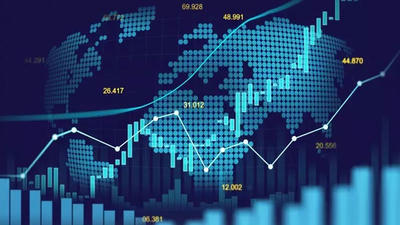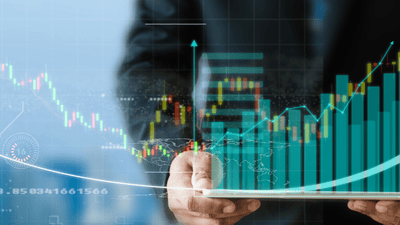
As we advance deeper into the 21st century, the global trade landscape is undergoing significant transformations. The year 2025 promises to present a new set of challenges and opportunities for businesses, governments, and consumers alike. With rapid technological advancements, evolving geopolitical dynamics, and shifting consumer preferences, the nature of international trade is being redefined.
Understanding Global Trade
Definition of Global Trade
Global trade refers to the exchange of goods and services between countries. It encompasses a vast network of transactions that extend beyond national borders, enabling countries to specialize in production while accessing markets for consumption. As a result, global trade plays a critical role in shaping economies, influencing job markets, and driving innovation.
Historical Context
For centuries, global trade has been a catalyst for economic development. From the Silk Road that connected East and West to modern trade agreements, the flow of goods and services has evolved. However, the landscape has been continuously influenced by several factors, including technological advancements, economic policies, and geopolitical tensions.
Key Trends Shaping Global Trade by 2025
1. Digitalization and E-Commerce
The rise of digital technology is transforming traditional trade practices. By 2025, e-commerce is expected to dominate global trade, with a significant portion of goods and services being purchased and sold online. The following factors will drive this trend:
-
Increased Internet Access: The proliferation of the internet, especially in emerging markets, will facilitate greater participation in global trade. More consumers will gain access to online marketplaces, increasing demand for goods from various countries.
-
Logistical Innovations: Advancements in logistics and supply chain technologies, such as automated warehouses and real-time tracking, will streamline the movement of goods, making cross-border trade more efficient.
-
Changing Consumer Preferences: The rise of the experience economy will prompt consumers to seek specialized, personalized products. E-commerce platforms will cater to these demands, creating a shift in how businesses engage with global markets.
2. Sustainability and Circular Economy
As concerns about climate change and environmental impact grow, sustainability will become a focal point in global trade. By 2025, businesses will need to adapt to consumer demand for sustainable practices, leading to the following changes:
-
Sustainable Supply Chains: Companies will be pressured to establish environmentally friendly supply chains, prioritizing ethical sourcing and reducing carbon footprints. This may involve selecting suppliers committed to sustainable practices and implementing eco-friendly logistics solutions.
-
Circular Economy Models: The transition to a circular economy, where products are designed for reuse and recycling, will reshape industries. Businesses will need to innovate in product design and waste management to align with sustainable principles.
3. Geopolitical Shifts
Geopolitical dynamics have a significant impact on global trade. By 2025, various factors will shape the geopolitical landscape, influencing trade practices:
-
Trade Policies and Protections: Protectionist measures, such as tariffs and trade restrictions, may continue to be a tool for governments seeking to protect domestic industries. Countries may adopt more aggressive trade policies, leading to tensions that could disrupt global supply chains.
-
Regional Trade Agreements: In response to shifting power dynamics, countries may form regional trade agreements that facilitate trade within specific areas. These agreements can provide opportunities for local businesses while creating barriers for non-participants.
-
Emergence of New Players: Emerging economies, particularly in Asia and Africa, are expected to play a more significant role in global trade. These regions will offer new markets for goods and services and may influence global trade policies.
4. Technological Advancements
Innovation in technology will continue to redefine global trade processes. By 2025, businesses will need to embrace technology to remain competitive:
-
Artificial Intelligence and Automation: AI and automation will enhance efficiency in logistics and supply chain management. Businesses that leverage these technologies will find opportunities to reduce costs and improve service delivery.
-
Blockchain Technology: Blockchain's potential to provide transparency and security in transactions may reshape how goods are traded internationally. It can streamline processes such as customs clearance and payment, alleviating inefficiencies in cross-border trade.
5. Demographic Changes
The demographic landscape is shifting, and these changes will influence global trade patterns by 2025:
-
Aging Populations: Many developed countries face aging populations, leading to labor shortages and increased demand for healthcare products and services. This shift will create new market opportunities for businesses that cater to older demographics.
-
Youthful Populations in Emerging Markets: Conversely, many emerging economies are experiencing youth booms. As young consumers increasingly enter the market, their preferences, values, and spending habits will shape global trade dynamics.

Diverse Economic Landscapes: Opportunities and Challenges
Opportunities
-
New Market Access: As digitalization expands, businesses can reach customers in previously inaccessible markets. Small and medium-sized enterprises will particularly benefit from e-commerce platforms that facilitate international sales.
-
Innovation and Collaboration: Businesses that embrace technological advances will have opportunities to innovate and collaborate with other companies globally. Sharing knowledge and practices can lead to new products and services that meet the demands of emerging markets.
-
Sustainability Leadership: Companies that adopt sustainable practices can differentiate themselves in a competitive market, appealing to environmentally conscious consumers. By prioritizing sustainability, businesses can enhance their reputation and build brand loyalty.
-
Diversified Supply Chains: The focus on sustainability and regional trade agreements may prompt companies to diversify their supply chains. This adaptability can enhance resilience against disruptions caused by geopolitical events or natural disasters.
Challenges
-
Regulatory Compliance: Navigating the diverse regulatory environments across countries can pose challenges for businesses seeking to expand into new markets. Companies must stay informed of local laws and trade agreements to ensure compliance.
-
Market Saturation: Increased competition in e-commerce may lead to market saturation. Businesses will need to invest in marketing and branding to differentiate themselves and attract customers amidst an overwhelming number of choices.
-
Cybersecurity Vulnerabilities: As businesses increasingly rely on digital platforms, cybersecurity risks will multiply. Protecting consumer data and maintaining secure transactions will be critical in building trust and credibility.
-
Geopolitical Instability: Ongoing geopolitical tensions can disrupt supply chains and create uncertainty in trade relations. Businesses must carefully monitor global political developments to anticipate potential impacts on their operations.
Preparing for the Future of Global Trade
1. Embrace Technology
To remain competitive in the evolving global trade landscape, businesses must embrace technology. This includes investing in automation, data analytics, and digital marketing to optimize operations and remain agile.
2. Focus on Sustainability
Companies should prioritize sustainability in their operations and supply chains. Adopting eco-friendly practices and implementing circular economy principles will resonate with consumers and position businesses favorably in the market.
3. Build Resilient Supply Chains
Diverse and resilient supply chains are crucial in navigating uncertainties. Businesses should evaluate and adapt their supplier networks to mitigate risks related to geopolitical tensions or market disruptions.
4. Engage in Continuous Learning
In the fast-paced world of global trade, continuous learning is essential. Businesses should invest in employee training programs to stay updated on the latest industry trends, technological advancements, and regulatory changes.
5. Foster Collaboration
Collaborative efforts among businesses, governments, and organizations can drive innovation and facilitate economic growth. By actively engaging in partnerships, businesses can enhance their competitiveness and navigate challenges collectively.
Conclusion
The global trade landscape in 2025 is poised for significant transformation, driven by digitalization, sustainability, geopolitical shifts, technological advancements, and demographic changes. As businesses navigate these new economic landscapes, they will encounter both opportunities and challenges.
By embracing technology, prioritizing sustainability, building resilient supply chains, and engaging in continuous learning, companies can position themselves for success in an increasingly interconnected world. The future of global trade will require adaptability and forward-thinking strategies to thrive in this dynamic environment.



